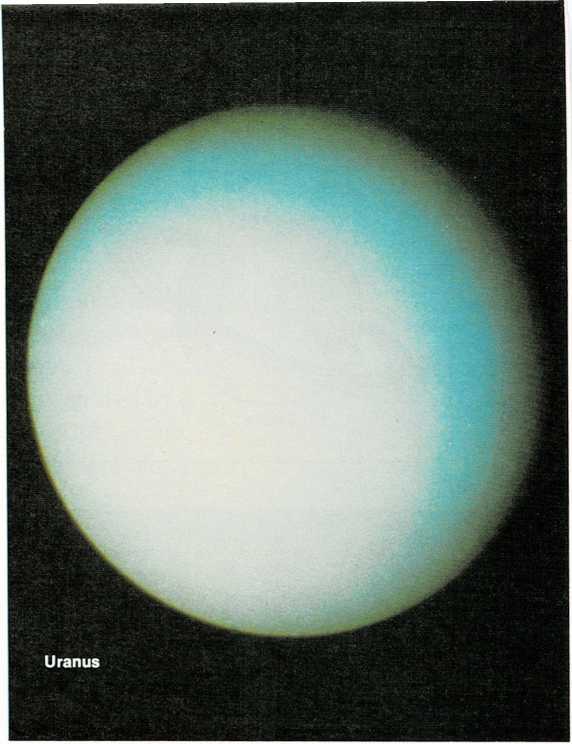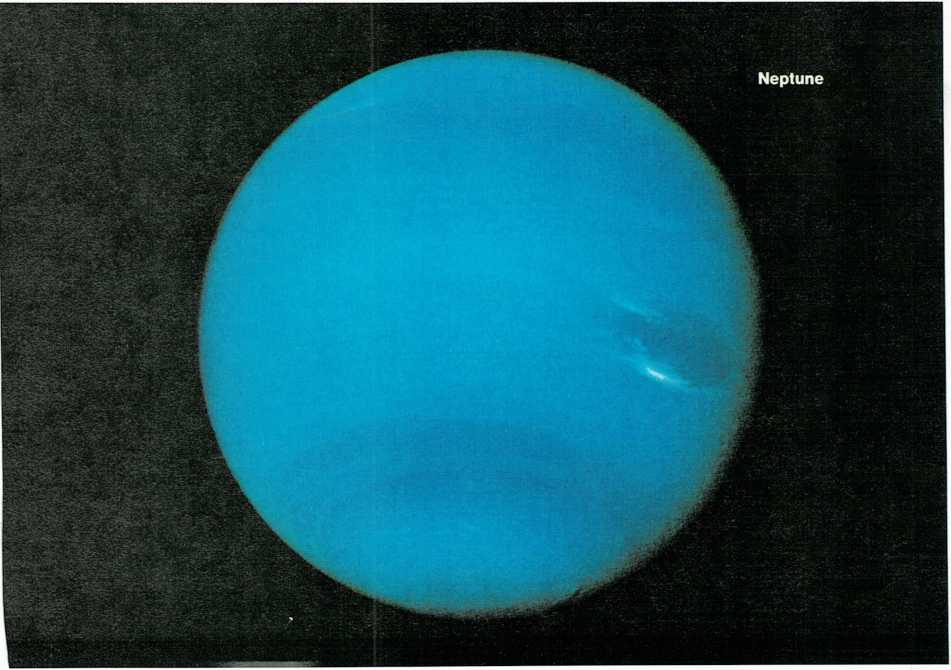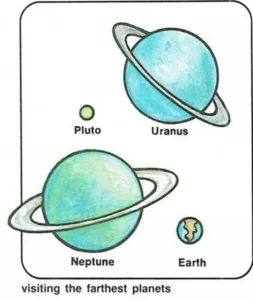
Space probes have visited Uranus and Neptune. Someday, we may send a
space vehicle to Pluto, the farthest planet.

The faraway worlds
The seventh, eighth, and ninth planets of the sun’s family are very far
away. Until recently, we knew very little about them. In 1986, the space
probe Voyager 2 reached Uranus, and in 1989, it reached Neptune. It
sent information about both planets back to the earth.
Uranus, the seventh planet, was named after an ancient sky god. It is
about 1.8 billion miles (2.9 billion kilometers) from the sun. Uranus
probably is made up of frozen gases. It is surrounded by thick clouds of
icy crystals. Its year is about 84 earth-years long, and its day is
about 16 hours. Uranus has fifteen moons and at least eleven rings.
Neptune, the eighth planet, was named after the Roman god of the sea. It
is about 2.8 billion miles (4.5 billion kilometers) from the sun.
Neptune is also mostly made up of gases, but its center may be a mixture
of slush and rocks. Its year is about 165 earth-years long, and its day
is about 17 hours. Like Jupiter, it has strong winds and a large spot,
the Great Dark Spot. Neptune has four rings and eight moons. One ring is
very faint. The largest moon, Triton, has “volcanoes” that give off
gases and slushy ice.
Pluto, the ninth planet, was named after the Roman god of the dead. It
is about 3.7 billion miles (5.9 billion kilometers) from the sun. At
that distance, the sun probably looks like only a very bright star.
Pluto is made up of frozen gases, and it is mostly ice. Its year is
about 248 earth-years long, and its day is about 6 earth-days. It has
one tiny moon.


